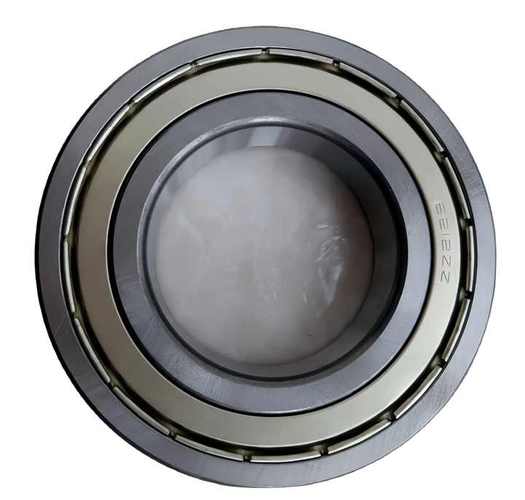Precision Bearings for Electric Vehicles: Key Benefits, Types, and Maintenance Guide
Precision bearings are vital components in electric vehicles (EVs), ensuring smooth rotation, reduced friction, and enhanced energy efficiency. Designed to withstand high-speed operations and variable loads, these specialized bearings directly impact EV range, battery life, and overall performance. This guide explores technical specifications, material innovations, and maintenance best practices for modern EV applications.
1. Types of Precision Bearings for EVs2. Benefits of Ceramic Bearings in Electric Cars
3. How to Maintain EV Precision Bearings
4. High-Speed Bearings for Electric Motors
5. Precision Bearing Installation Guide EVs
1. Types of Precision Bearings for EVs

Electric vehicles utilize three primary bearing types: angular contact ball bearings for wheel hubs, cylindrical roller bearings for transmission systems, and hybrid ceramic bearings for electric motor shafts. Angular contact designs handle combined radial and axial loads in regenerative braking systems, while tapered roller variants manage extreme torque fluctuations. Ceramic hybrid bearings with silicon nitride balls demonstrate 60% lower friction coefficients compared to steel counterparts, significantly improving energy efficiency. Leading manufacturers now incorporate graphene-coated races to reduce wear under high RPM conditions.
2. Benefits of Ceramic Bearings in Electric Cars
Ceramic bearings offer transformative advantages for EV applications. Their non-conductive properties prevent electrical arcing in high-voltage motors, while thermal stability maintains dimensional accuracy across -40°C to 150°C operating ranges. Laboratory tests show ceramic hybrids extend lubrication intervals by 400% compared to conventional steel bearings. The material's inherent corrosion resistance proves particularly valuable in battery cooling systems exposed to thermal interface materials. Tesla's 2023 drivetrain update reportedly reduces rotational inertia by 15% through advanced ceramic bearing implementations.
3. How to Maintain EV Precision Bearings
Proactive maintenance extends EV bearing lifespan beyond 300,000 miles. Implement vibration analysis every 15,000 miles using ISO 10816-3 standards to detect early-stage pitting. Use polyurea-thickened greases with 20% molybdenum disulfide additive for high-speed applications. Thermal imaging during rapid charging sessions helps identify overloaded bearings. BMW's i4 service manual recommends replacing motor bearings every 160,000 km in high-torque driving conditions. Always follow OEM torque specifications during reassembly to prevent premature failure from improper preloading.
4. High-Speed Bearings for Electric Motors
Modern EV motors demand bearings capable of 20,000 RPM continuous operation. SKF's EDrive series employs symmetrical roller designs with logarithmic profiles to minimize edge stresses. Specialized cage materials like PEEK (polyether ether ketone) withstand 180°C temperatures while reducing centrifugal forces. Tesla's Plaid motors utilize magnetic bearing hybrids that achieve 0.5μm axial runout tolerances. Critical design parameters include DN values (bore mm × RPM) exceeding 1.2 million and grease service intervals aligned with 100,000-mile battery warranties.
5. Precision Bearing Installation Guide EVs
Proper installation ensures optimal bearing performance. Always use induction heaters to achieve 80-90°C for interference fits, avoiding temperature gradients that cause raceway distortion. Apply axial mounting pressure exclusively on the ring with tight fit. Post-installation, verify radial clearance using laser micrometers – 4-8μm clearance is ideal for most EV motor applications. BMW specifies 25Nm ±5% for tapered roller bearing preload in iX models. Implement run-in procedures: gradually increase RPM from 50% to 100% over 30 minutes while monitoring noise signatures.
From understanding ceramic bearing advantages to mastering installation protocols, this comprehensive guide addresses critical aspects of EV precision bearing technology. Whether optimizing existing systems or designing next-gen drivetrains, these insights help engineers and technicians maximize electric vehicle efficiency. Continue reading to discover how proper bearing selection impacts battery range, thermal management, and long-term maintenance costs in modern EVs.
Precision bearings form the mechanical backbone of electric vehicle innovation. By selecting appropriate bearing types, implementing advanced materials like ceramics, and adhering to strict maintenance protocols, manufacturers achieve unprecedented levels of energy efficiency and durability. As EV technology evolves, bearing solutions will continue playing a pivotal role in extending range capabilities and reducing total ownership costs.




 13869596835
13869596835